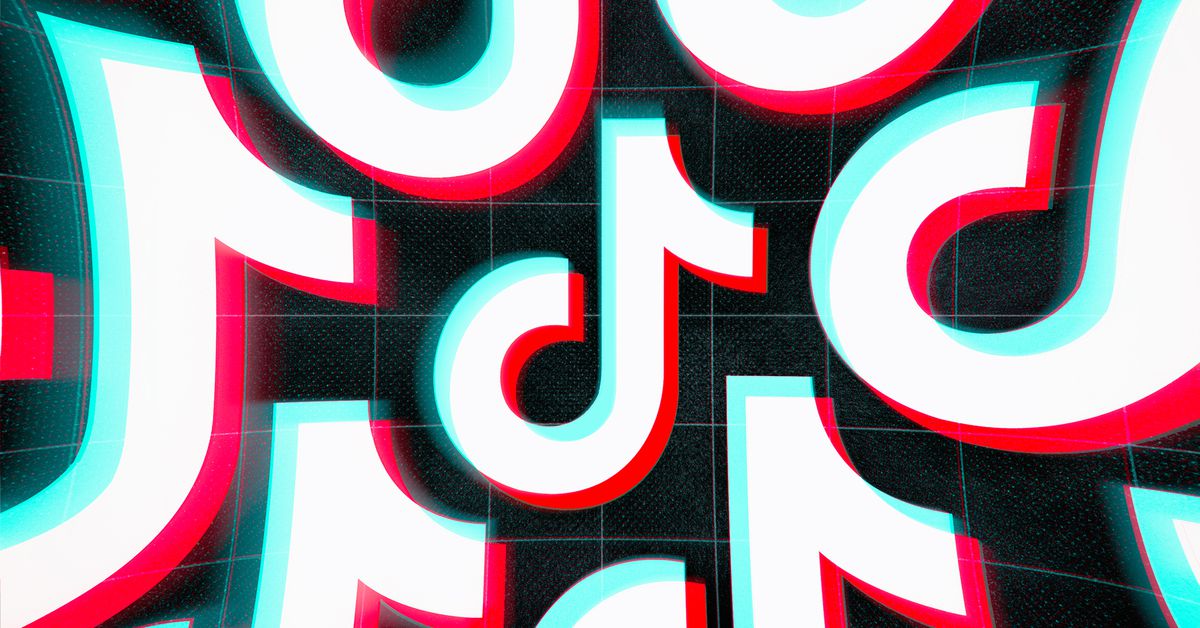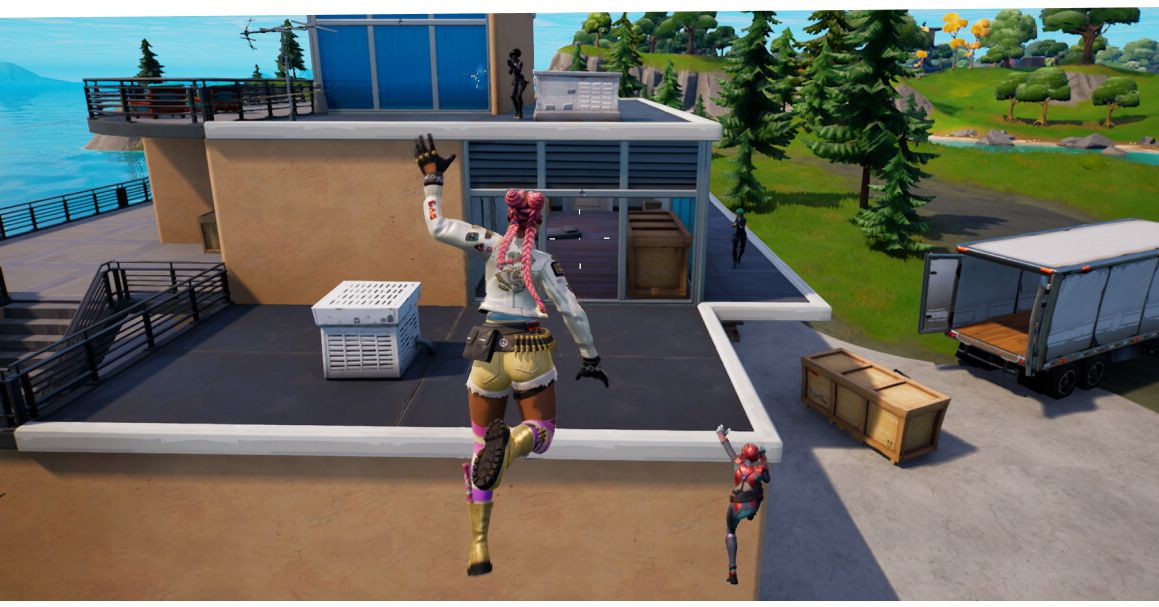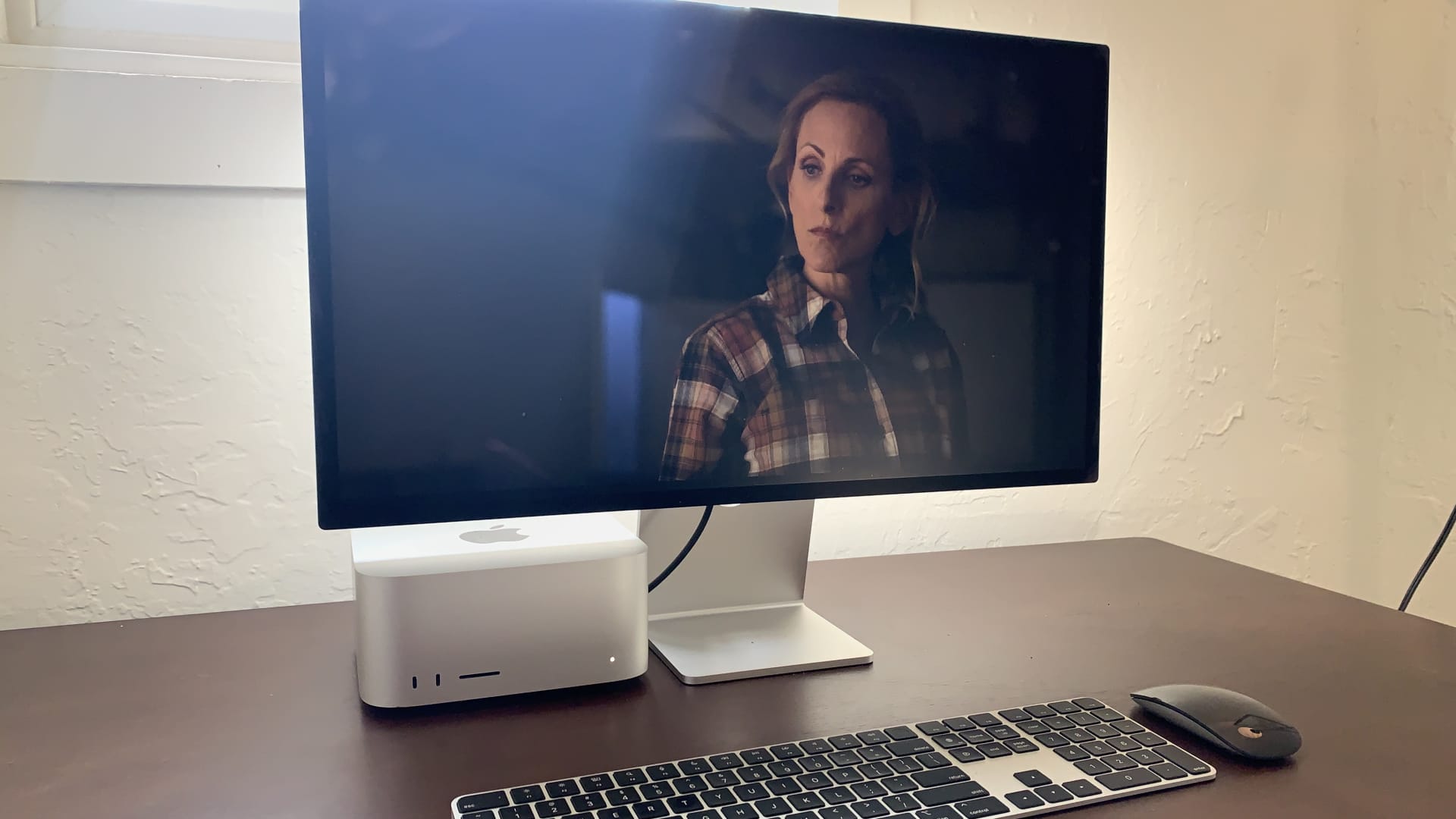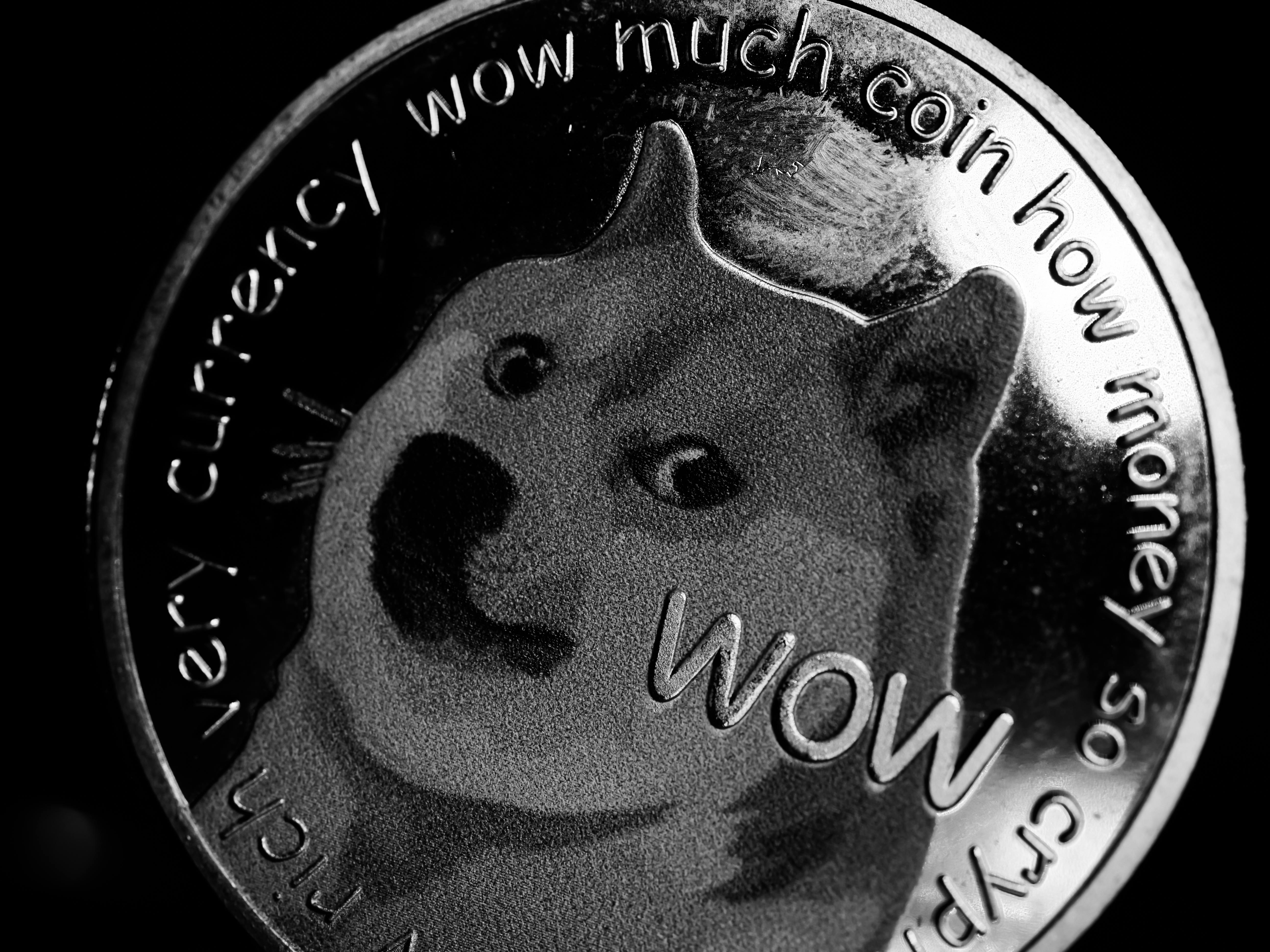One designer’s quest to build the world’s greatest desk accessories
Jeff Sheldon’s desk is a well-known thing on the internet – now he’s trying to upgrade it.Ugmonk started as a T-shirt store — now founder Jeff Sheldon is trying to turn it into something much more ambitious. But as he...
/cdn.vox-cdn.com/uploads/chorus_asset/file/24108867/9N3A9760.jpeg)
Jeff Sheldon’s desk is sort of famous. You might have even seen it before: Sheldon, the founder and CEO of a high-design shop called Ugmonk, uploaded a few photos to Unsplash several years ago, and his ultra-clean setup filled with natural wood and white colors has since been viewed more than 400 million times. People have been asking him for a decade where he got his cool monitor stand, even though it’s actually just an Ikea hack. The desk sits in Sheldon’s home office in suburban Pennsylvania, in the corner of a sun-soaked room with so many windows and so many trees just outside the windows that commenters occasionally ask if he lives in the jungle.
The day I meet Sheldon, he’s looking at that desk from the other side of his home office on a bright, hot day near the end of summer. He’s in jeans and a black T-shirt, and limping ever so slightly thanks to a recent soccer injury. His workspace looks normal enough — a little cleaner than usual, maybe, and Sheldon did just spend a few minutes making sure all the accessories were at perfect 90-degree angles. But a few feet away stand a handful of people and a heaping mound of camera gear. Two of them push a makeshift dolly with a Red camera on it, slowly, steadily in the direction of the desk, as Sheldon walks into frame and sits down. The shot ends in a perfect modern still-life: Sheldon hard at work, his dog Pixel lying on a bed a few feet behind him.
The crew is here to shoot a video for Ugmonk’s latest Kickstarter project for a line of desk accessories called Gather. Gather’s unofficial mission statement is, essentially, that it’s okay to be messy, but it should also be easy to clean up. Sheldon, who has young kids, seems to wage a perpetual battle between his minimalistic and fussy designer tendencies and the simple realities of life. And so Gather is, in one sense, just a set of beautiful containers: a wooden pen holder, a padded stand for your phone, an all-metal bin where you can stash business cards and random detritus, a monitor stand with a dedicated slot for your papers. A place for everything, Gather promises, even if everything’s not always in its place.
For Sheldon, though, Gather is also the most complicated, most ambitious, most difficult thing he has ever made. It’s actually his second attempt to make these kinds of products after the first didn’t go to plan. This time, all the pieces are extremely high quality and extremely high priced. Sheldon admires designers like Dieter Rams, Saul Bass, and Paul Rand and aspires to build things akin to the classic Eames chair. Maybe they won’t be heirloom desk accessories, maybe that’s not even a thing, but Sheldon’s aiming for “definitely heirloom quality.” In a world of cheap crap and planned obsolescence, Ugmonk wants to make things that last as long as you need them.
As the crew resets and director Jon Rothermel watches the footage on a monitor in the hallway, Sheldon obsesses about the details of the shot. He notices the clock on his computer and the clock on his wall are different; will anyone notice? He’s also worried about too many cables being visible and the way the desk shakes when he sits down and the way the sun hits his face when he leans slightly forward and the fact that, whoops, Pixel just left. They do five takes of this shot — which will be the all-important intro for the Kickstarter video — before Sheldon and Rothermel are happy with it.
A few minutes later, after a lot of close-up shots of Sheldon’s desk and the stuff on it, a grand switchover happens. The Ikea-hack monitor stand, the phone holder, the various bins and containers for all of Sheldon’s stuff, almost everything in those viral photos — all gone, all replaced with Gather components. The whole thing feels oddly ceremonious: Sheldon spent years working on a new set of desk accessories but hasn’t upgraded the home office that started it all until right now. His home office and his desk reflect more than a decade of work since he started Ugmonk to sell T-shirts. And now, with a few new pieces, he’s just moved into a new era.
Maybe I’m reading too much into all that. But after spending time with Sheldon, I can tell you confidently he felt it, too. To him, Gather is much more than a bunch of desk accessories.
The Gather pieces include a monitor stand, a headphone stand, and a bunch of organizing tools.
Learn by shipping
Sheldon started a company in 2008 as a side project. He was working full-time at a design firm in Vermont, not making much money and not having much to do thanks to the ongoing recession. Since college, he’d enjoyed entering T-shirt design contests hosted by companies like Threadless, Woot, and DesignByHumans and eventually started to win them. “You’d get, like, $500, and they send you five of the shirts.” In college, this felt like a fair trade, but as Sheldon started to win more often and enter the working world, he realized he was getting the short end of the stick. “They owned all the rights to my artwork,” he says, “and they’re printing five, 10, 15,000 of these shirts, and they’re making all the money. And I’m sitting here with a $500 check.”
Confident that people liked his designs, Sheldon decided to start selling the shirts himself. He borrowed $2,000 from his dad, set up a store on the Big Cartel platform, drew up some new designs in his trademark minimalistic style, printed them onto 200 American Apparel T-shirts, and started posting his stuff in forums and online. He named his shop Ugmonk — a meaningless word that Sheldon doesn’t want to explain because he’s worried people will be disappointed with how boring the story is — mostly because he didn’t want to call it something like “Jeff’s T-Shirt Designs.” He and his wife did most of the shipping, and much of the inventory lived in his parents’ basement.
In 2017, Sheldon decided to take a bigger swing and design a product from scratch. He wanted a place to put his phone, a home for his pens, just a simple organizer to stick behind his keyboard. So he designed a small, modular set, named it Gather, and launched a Kickstarter campaign. Sheldon hoped to get about $18,000 in preorders through the campaign and instead ended up with $430,960. It was a big enough deal that the Shark Tank producers called, he says, though Sheldon had to turn them down since he hadn’t actually made the product yet.
At the time, this seemed like a good problem to have. Sheldon even launched Gather as a separate brand on a separate website, thinking it might be bigger than Ugmonk and could ultimately replace it. He thought Gather might end up in Target. This was going to be huge.
Eager to fill all those orders and capitalize on the interest in Gather, Sheldon turned to a company in Texas that had a factory in China. And he quickly discovered exactly how it works to make products at scale. “We were injection-molding the parts,” he says, “which means the parts cost less than $1, but the molds cost between $20,000 and $30,000.” That meant no small batches, no experiments, only giant orders. The factory in China had never worked with wood before, it turned out, and the first models that came back were warped and wonky and generally nowhere near Sheldon’s standards. So he gave feedback to his contact in Texas, who took that feedback to China, and weeks later, more products showed up at his door. Rinse and repeat, over and over. For months.
Even after all the back and forth, Sheldon estimates now that 30 percent of the products he shipped to Kickstarter backers ultimately had to be replaced. Most users actually liked the product, and he eventually sold out his inventory, but too much of it just wasn’t up to Sheldon’s standards. He thought more than once about just scrapping the whole idea. “I was so disconnected from the process,” he says now. “I didn’t go to the factory, and I should have. I wasn’t the person communicating. I would just wait for photos or prototypes to show up at my house.” He decided, right then and there, that he didn’t want to be a big Target brand if this was what it took.
Gather has been two years in the works, with a huge amount of prototyping with local manufacturers.
“Hardware is hard” is a much-repeated maxim in the tech industry, and for good reason. Countless companies have built and marketed cool prototypes, only to discover that there’s a massive difference between making one product and 100 and an even bigger one between 100 and 100,000. Sheldon learned this lesson every step of the way. One of his first-ever batches of shirts came back unusable, which he says taught him a valuable lesson: “how to eat costs.” As the stakes got higher, he decided the only way to get what he wanted was to exert much more control over the process — and to aspire to making a few great things instead of countless crummy ones.
Even that was harder than it sounded, though. With his next product, a paper-based productivity system called Analog, another Kickstarter hit, Sheldon resolved to think smaller and more locally. He contracted with a printer in Indiana for the cards, hoping working domestically would help. It didn’t. There were just too many orders, and the quality suffered as a result. Sheldon had to throw away most of what was produced — though he kept a few of the failures as a reminder of how things really work. But then, through a friend, Sheldon got connected to a woodworker down the road in Pennsylvania who grew up working for his Amish father’s furniture business and eventually started his own. “They bailed us out of the Analog Kickstarter by replacing all the bad ones,” Sheldon says, “and got us connected to the Amish and Mennonite communities.”
“Hardware is hard” is a much-repeated maxim in the tech industry, and for good reason
Analog is now Ugmonk’s biggest product — Sheldon says it accounts for about 80 percent of Ugmonk’s sales. But he never stopped thinking about Gather. He still wanted to design desk accessories and had lots of ideas for new components. He found an industrial designer, Jack Marple, who agreed to help him figure out how to design and manufacture desk accessories in a more local, more predictable, higher-end way. They started sending 3D-printed prototypes back and forth and began reaching out to more local shops and fabricators.
They ultimately built a local supply chain, made up of largely Mennonite and Amish manufacturers, who they hoped could make Gather at a much higher quality. But getting up and running took a huge amount of work. A Mennonite-run company that mostly does metalwork for dairy farms agreed to be one of Ugmonk’s suppliers, for instance, but only after some convincing. “They’re making cattle shoots and plow pieces,” Sheldon says, “and I tell them it’s a stand for an iPhone... they still have flip phones.” But once Sheldon told them about the quality and craftsmanship he was looking for, they were in.
Over the last couple of years, Sheldon and his team — which was, for a long time, mostly Sheldon’s wife and family but now includes five part-time helpers and Tim Fortney, who became Ugmonk’s second full-time employee earlier this year — have spent countless hours driving between factories and warehouses, looking at prototypes and endlessly refining the Gather products.
Sheldon and Ugmonk spent years obsessing over every tiny detail of the Gather system.
Sheldon offers one example: “the edges of the metal” for the large monitor stand, he says, “when they came off the laser cutter, [the manufacturers] were doing the bending and the powder coating. Well, if you don’t file the edges just right, the powder coating will stick to the edge. And it’ll glob up and actually accentuate little imperfections.” If you’re cutting metal for a construction vehicle, nobody cares about the globs. But close up, those details matter — at least, they do to Sheldon. So now there’s another step in the process, “where they’ll file all the edges where it gets powder coated.” It’s more work and costs more to do, but for Ugmonk, it’s worth it.
All this makes everything slower and vastly more expensive. Sheldon estimates that building the new generation of Gather this way costs “four or five times” more than doing it the old way, with injection molds in foreign factories. But he likes that he can stand in the factory and watch the test runs happen. He likes being able to take the four or five bad eggs back and have them quickly replaced. “There’s a level of relationship,” he says, “of looking someone in the eye and sitting across the table from someone that you can’t hide from.” He acknowledges he’s a bit of a control freak but says he’s willing to do what it takes — and push others to do the same — to make great stuff. “It doesn’t scale,” he says, “and I’m okay with that.”
Making the Gather video required building beautiful office sets in otherwise rugged spaces.
Embrace the mess
After a few hours of shooting inside Sheldon’s house, the crew finishes by mimicking their opening shot — the slow roll toward Sheldon’s desk — with the full line of new Gather accessories now in place. Satisfied they’ve gotten it right, they relocate to Ugmonk’s new headquarters, a converted paper mill a few miles down the road from Sheldon’s house.
In a backroom of the building, Sheldon and Rothermel have spent weeks building two separate office sets into an otherwise barren and messy concrete space. In one corner, a dark, gamer-style setup with a full suite of black Gather gear. In the other, next to the window, a lighter wall with white accents, plants spilling off of shelves, a pink iMac, and all the white Gather components. Both are clean and camera-ready, at least once Sheldon finishes taping all the cables to walls and table legs. (Yes, he knows accepting some untidiness is part of the point. But he can only take so much.)
The point of these setups is to show how Gather can work for anyone. It drives Sheldon crazy that people are content to prop their monitor on a stack of books or put up with a crappy Amazon Basics laptop stand that is perpetually falling apart. But when he looks around at the people who work on their spaces, he says, caring about your setup is a tech-geek thing, somehow. He wants to bring a design-geek energy to the space.
Caring about your setup is a tech-geek thing, somehow — Sheldon wants to bring a design-geek energy to the space
After a 12-hour day, they’re still not done; another long shoot day follows soon after. Finally, with the video shot, the Ugmonk team spends weeks on every other detail of the launch. They oversee a test run of 30 full Gather sets, in both color options, to see how things come off the manufacturing line. (There are some small defects, like a slightly wobbly headphone stand, but those are quickly fixable.) They touch up the photos, debate the Kickstarter taglines, and sort out the prices. At the last minute, Sheldon remembers he needs to get the project approved by Kickstarter before it can go live, but luckily that goes well.
The Kickstarter launches on October 18th with a modest goal of $12,500. By the end of its first day, it hit $80,000. Sheldon knew this would happen — he just picked a low number because Kickstarter’s recommendation algorithms like projects that crush their goal quickly. By the time the campaign ends in December, he’s hoping for a number closer to $500,000, and if he’s really dreaming, it might even hit seven figures.
It’s a big dream and hardly guaranteed. Even with a Kickstarter discount, the Gather laptop stand is $129, the organizer set is $159, and the full 10-piece set — large monitor stand, laptop stand, organizers, and a magnetic base plate to hold them all in place — is $779. When everything goes on sale in April 2023, that set will cost $1,000. A grand for some desk accessories is a lot to ask.
Sheldon’s confident that people will see the value, though. He has collected a lot of devoted customers over the years — when he announced Ugmonk would stop selling T-shirts, which Sheldon says was because his supplier had become a problem, people flocked to the site to buy as many as they could. What he’s really worried about is whether he can deliver. “What if we get 5,000, 10,000 pieces,” he says, “and they’re all bad?” That would be an expensive and time-consuming problem.
But he has a decade of hard-won lessons in how the industry works and rests secure in the knowledge that, at the very least, that problem would be down the road and not across the world. “We’ve looked everybody in the eye, and we can go there,” he says. “That feels a lot better than the container coming from China, we open up the doors, and we’re like, ‘Oh no.’”
I asked Sheldon if the long-term goal was to become a full-on furniture manufacturer, to move from desk accessories to desks and chairs and tables and everything else. He initially said he might but then immediately began to fret about how the shipping logistics alone would change his small company for the worse. It might be more fun, he says, to find other places where these small things could be useful. “Maybe it goes on your kitchen table or your entry table.”
Then he starts to riff: “I want to do special editions of Gather, like, in a bright orange and just do 100 of them. I want to lean more into the artists’ way of doing it. I could literally just make one.” For him, making one is way more fun than making millions. And he knows exactly how to get it done.
Photography by David Pierce / The Verge

 Astrong
Astrong 
































